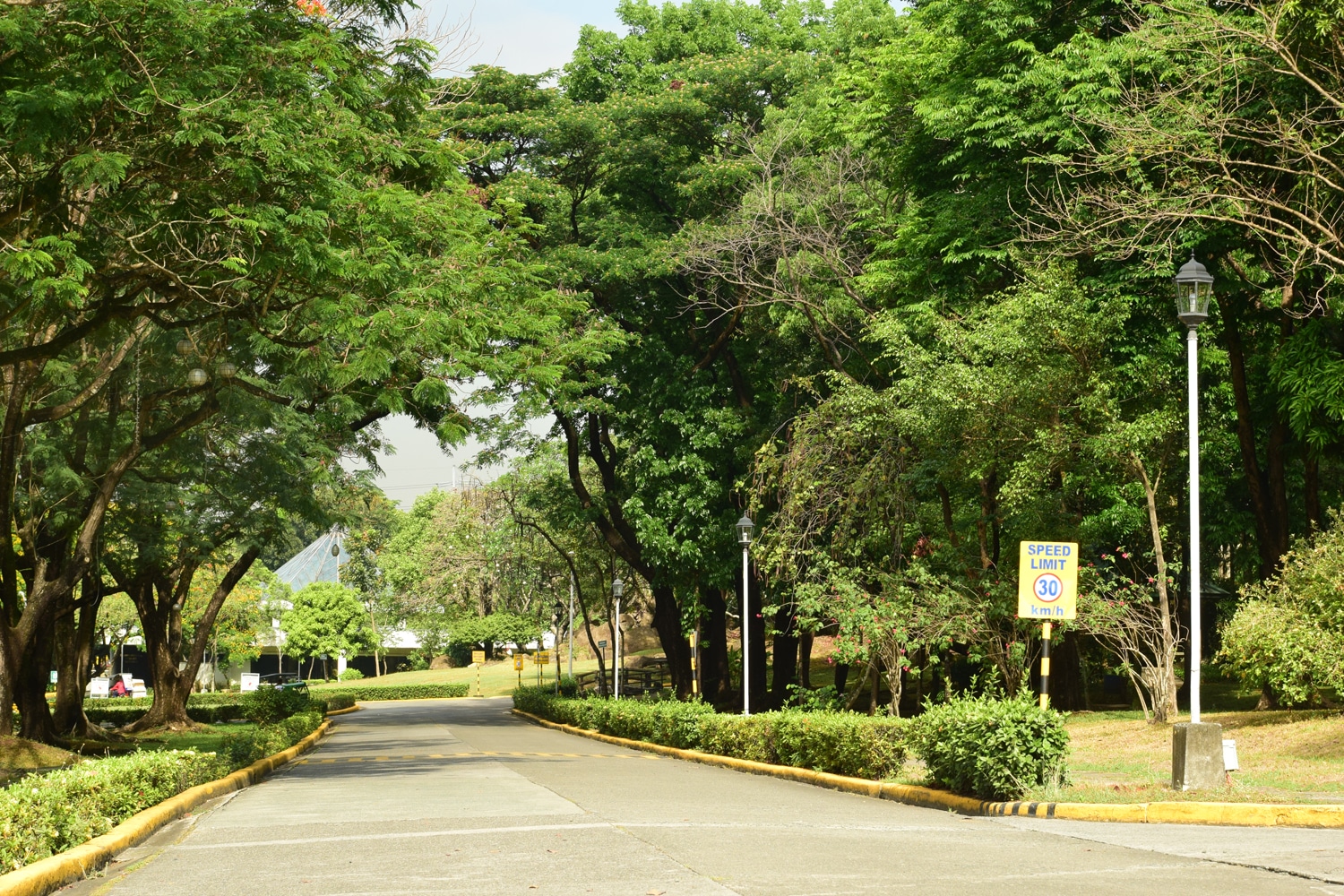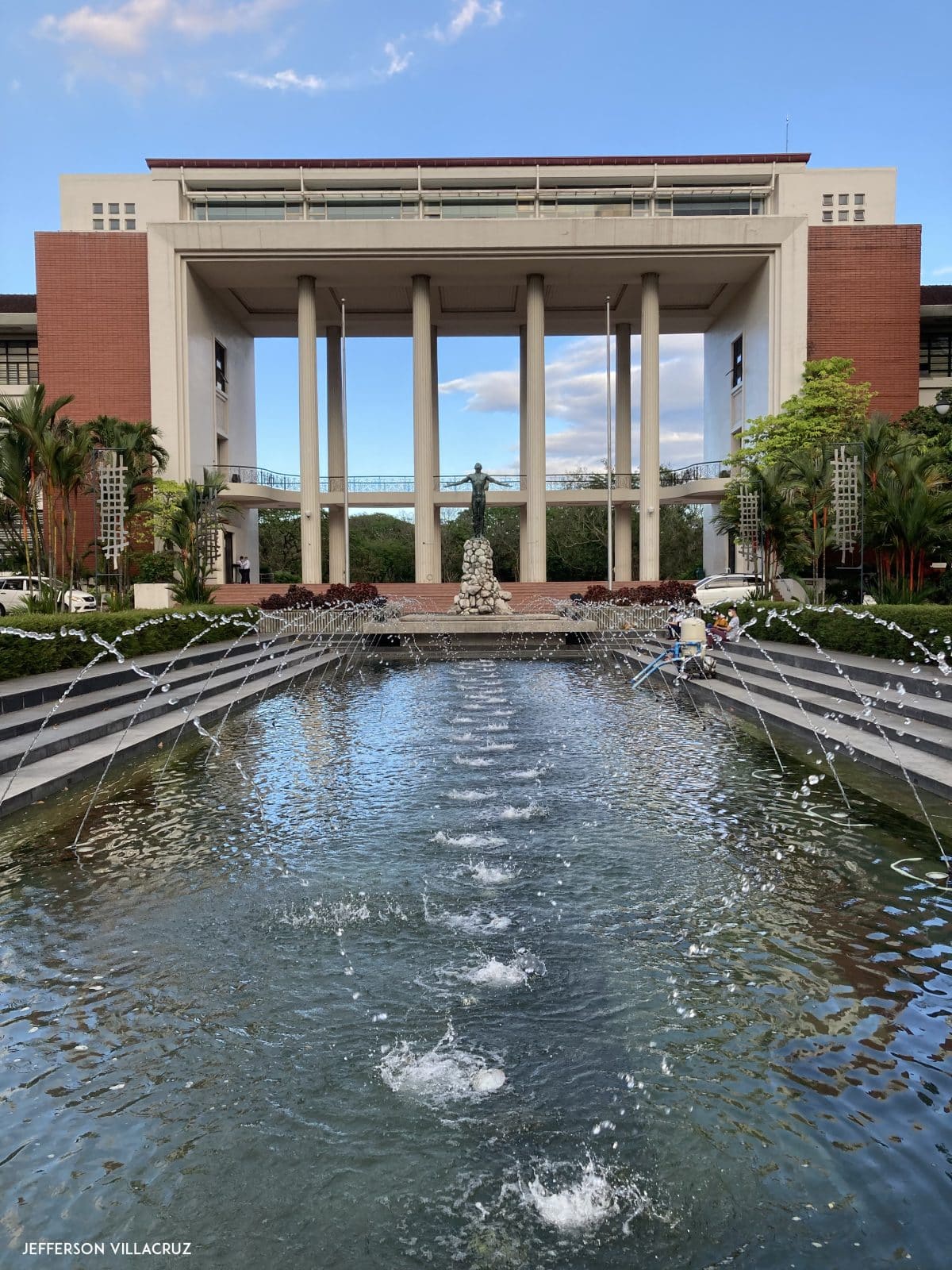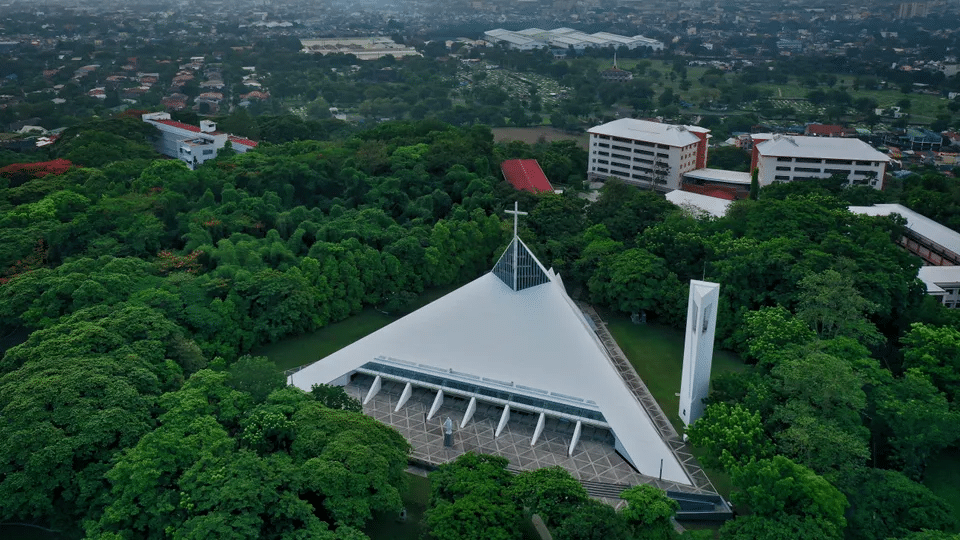University open spaces as Quezon City’s learning oases
In Metro Manila, where urban sprawl often obscures green and blue open spaces, educational institutions have become verdant sanctuaries for nature and learning.
These campuses are more than academic hubs; they are dynamic ecosystems that nurture both the mind and the environment, creating educational oases amid the concrete jungle.
Importance of green, blue open spaces
Research shows that green open spaces enhance emotional and cognitive health (Kaplan & Kaplan, 1989; Kuo, 2003). Natural environments in these spaces reduce stress and boost attention spans, making them ideal for learning (Berman et al., 2008).
Therefore, integrating greenery in schools is not just aesthetic but essential for fostering a rich learning environment (Nisbet & Zelenski, 2011).
Similarly, blue open spaces such as lakes and rivers are crucial for mental well-being. They aid in stress relief and mental recovery, enhance mood, and encourage social interaction and physical activity (Bell et al., 2016; White et al., 2010). Thus, maintaining access to these spaces is vital for promoting wellness in academic settings.
Quezon City’s learning oases
Along Katipunan Avenue, schools like the University of the Philippines Diliman (UPD) and Ateneo de Manila University (AdMU) serve as prime examples of blending education with nature.
UPD, a forested haven, dedicates nearly half its campus to green and blue spaces (Cruz, 2015). Its central green spine—from the Sunken Garden to the Lagoon and Oblation—creates a tranquil environment amid the urban chaos (Baker, 2016). The campus features lush buffer zones along University Avenue, mitigating road noise and providing a serene atmosphere. Students and faculty benefit from this environment, which encourages balance and rejuvenation (Kaplan & Kaplan, 1989).
UPD also boasts of sports fields and gathering spaces, fostering community events and athletic participation. The grand amphitheater of Quezon Hall ultimately symbolizes shared experiences and the university’s impact in the communities’ life (Santiago, 2021).
Nearby, AdMU exemplifies the integration of spirituality and nature in its campus design. The Church of the Gesu, surrounded by lush foliage, serves as both a spiritual and recreational hub (Peters & D’Penna, 2020). The Arete development, meanwhile, extends the campus experience outdoors with vibrant spaces for art installations and performances (Chrisinger & Rich, 2020). Tree-lined paths throughout AdMU buffer noise from Katipunan Avenue and foster community.
Miriam College, similarly, incorporates tree-lined pathways and gardens, offering spaces for reflection and social interaction.
Both institutions focus on sustainability practices, including waste reduction and energy conservation.
Challenges of urbanization
As Metro Manila urbanizes, the threat to these green and blue open spaces intensifies.
Educational institutions on Katipunan Avenue stand as protectors of these vital oases, setting a precedent for other institutions in the metro. Amid rapid development, these sanctuaries offer a crucial counterbalance to concrete expansion.
The concept of a learning oasis extends beyond aesthetics, emphasizing the importance of mental, emotional, and environmental well-being. The campuses along Katipunan Avenue showcase how integrating nature into education can support personal growth, community engagement, and environmental stewardship.
Amid urbanization, these institutions highlight the power of nature in education, advocating for greener campuses and fostering ecological consciousness for future generations.
The author is a Filipina landscape architect; head of NCCA’s National Committee on Architecture and the Allied Arts; honorary secretary of the International Federation of Landscape Architects-Asia Pacific Region; and an academic in the Philippines.
References:
Baker, A. (2016). Exploring the healing effects of urban green spaces. Urban Forestry & Urban Greening, 19, 1-8. https://doi.org/10.1016/j.ufug.2016.06.001;
Bell, S., Fisher, J., & J. (2016). Blue space: The importance of water for mental health. Landscape Research, 41(4), 415-429. https://doi.org/10.1080/01426397.2016.1130730;
Berman, M. G., Jonides, J., & Kaplan, S. (2008). The cognitive benefits of interacting with nature. Journal of Environmental Psychology, 28(2), 175-184. https://doi.org/10.1016/j.jenvp.2008.01.002;
Chrisinger, B. W., & Rich, T. (2020). Contemplation by design: leveraging the “power of the pause” on a large University campus through built and social environments. Frontiers in public health, 8, 31;
Cruz, R. (2015). The role of green spaces in urban universities: A case study of the University of the Philippines Diliman. Philippine Journal of Environmental Science, 12(1), 25-37;
Kaplan, R., & Kaplan, S. (1989). The experience of nature: A psychological perspective. Cambridge University Press;
Kuo, F. E. (2003). The role of Arbor Day in the promotion of community greening. Journal of Arboriculture, 29(2), 128-134;
Nisbet, E. K., & Zelenski, J. M. (2011). Underestimating nearby nature: Affective forecasting errors and rural-urban differences in intentions to interact with nature. Psychological Science, 22(9), 1119-1124. https://doi.org/10.1177/0956797611416251;
Peters, T., & D’Penna, K. (2020). Biophilic design for restorative university learning environments: A critical review of literature and design recommendations. Sustainability, 12(17), 7064;
Santiago, L. (2021). Community and identity at the University of the Philippines: A historical perspective. Philippine Studies, 69(2), 215-240. https://doi.org/10.1353/phil.2021.0022;
White, M. P., Alcock, I., Wheeler, B. W., & Hartig, T. (2010). Recreational physical activity in natural environments and implications for health: A population-based study. Health & Place, 16(3), 662-670. https://doi.org/10.1016/j.healthplace.2010.01.004;



